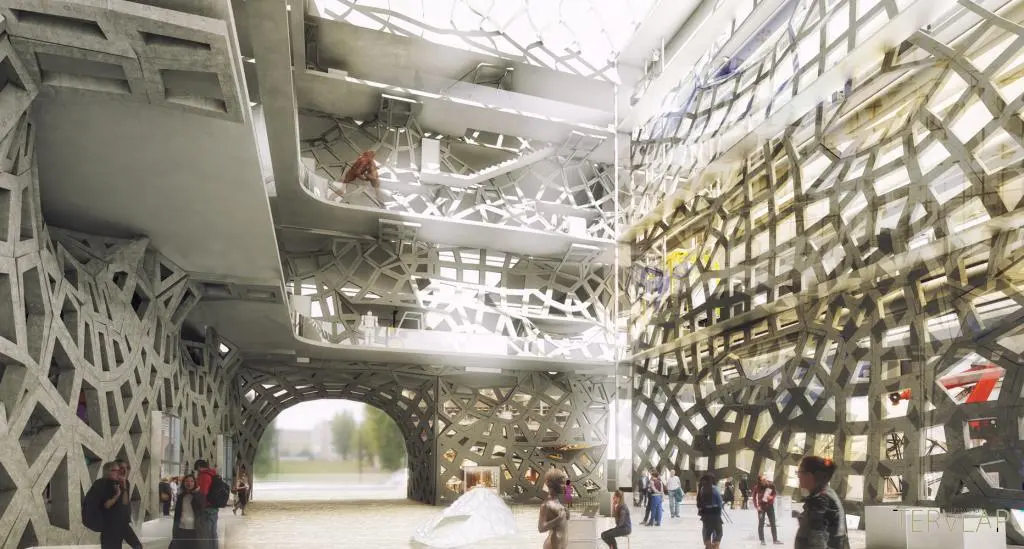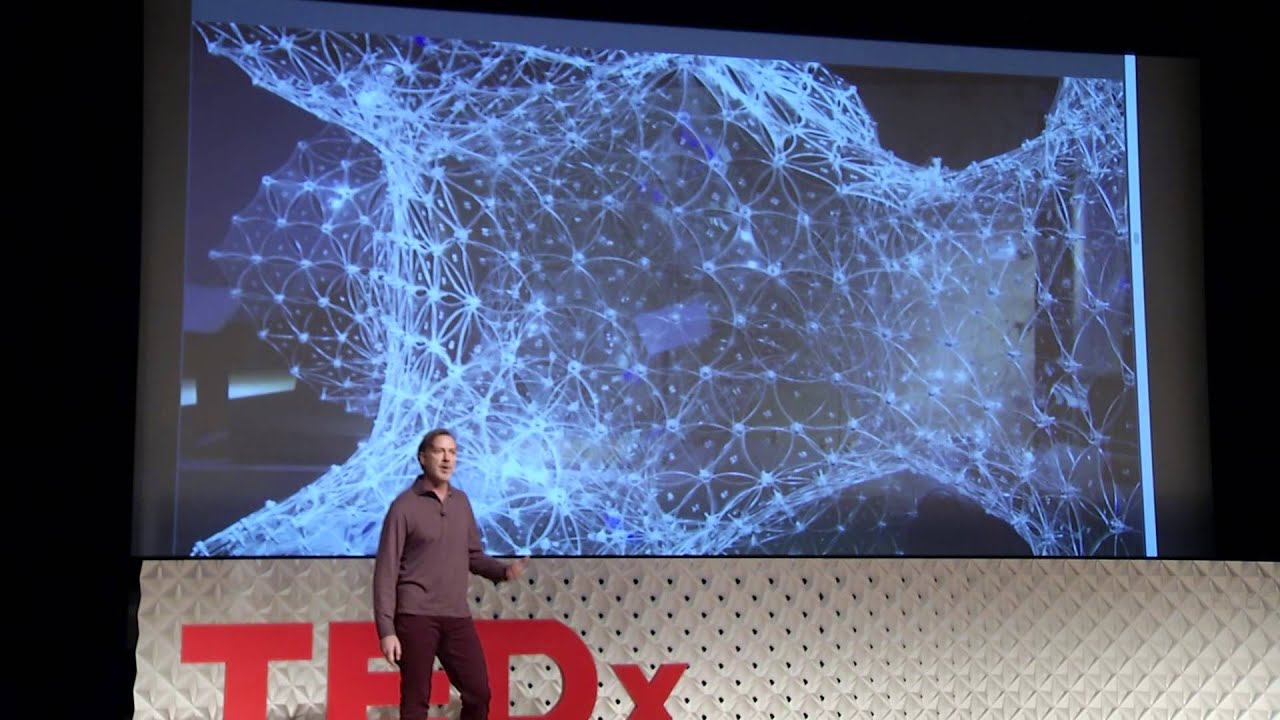Digital Fabrication - Revolutionizing Design And Manufacturing Processes
Digital fabrication, also known as fabbing or additive manufacturing, is the process of creating physical objects directly from a digital model by layering materials such as plastics, metals, or ceramics.
Author:George EvansMar 30, 2023116 Shares1.8K Views

Digital fabrication, also known as fabbing or additive manufacturing, is the process of creating physical objects directly from a digital model by layering materials such as plastics, metals, or ceramics.
It involves the use of computer-controlled tools and machines such as 3D printers, CNC machines, and laser cutters to turn digital designs into physical objects.
With its ability to produce complex shapes and forms that are impossible to achieve through traditional manufacturing methods, digital fabrication has revolutionized the way we design and make things.
In this article, we will explore the concept of digital fabrication in more detail and its various applications.
What Is Digital Fabrication?
Digital fabrication is a process of creating physical objects from digital models using automated techniques.
It involves using computer-aided design (CAD) software to design a digital model, which is then sent to a machine that uses various tools, such as 3D printers, laser cutters, and CNC machines, to create the physical object.
Digital fabrication has revolutionized the manufacturing industry and has opened up new possibilities for designers and architects.
Tools And Techniques Of Digital Fabrication
Digital fabrication encompasses a range of tools and techniques used to create physical objects from digital designs. These tools and techniques include computer-aided design (CAD) software, computer numerical control (CNC) machines, 3D printers, laser cutters, and more.
CAD software is used to create digital designs, which can then be sent to a CNC machine, 3D printer, or laser cutter for fabrication.
CNC machines use computer-controlled cutting tools to carve out precise shapes and designs from a variety of materials, including wood, metal, and plastics.
3D printers use layer-by-layer additive manufacturing techniques to build up three-dimensional objects from digital designs, typically using plastic or resin materials.
Laser cutters use focused laser beams to cut or engrave designs into a variety of materials, including wood, plastic, and even fabric.
Other tools and techniques used in digital fabrication include robotics, sensors, and digital modeling software. These tools allow designers and engineers to create increasingly complex and precise designs, and to test and refine them before fabrication begins.
Overall, digital fabrication has revolutionized the way we design and manufacture physical objects, enabling us to create highly customized and intricate designs with incredible speed and precision.

How is digital fabrication changing our built environment? | Andrew Vrana | TEDxHouston
Applications Of Digital Fabrication In Architecture And Design
Digital fabrication has brought a new dimension to architecture and design, enabling the creation of complex forms and structures with precision and efficiency. Some of the applications of digital fabrication in architecture and design include:
- Prototyping- Digital fabrication technologies such as 3D printing, laser cutting, and CNC milling have made prototyping faster and more accurate. Architects and designers can create physical models of their designs quickly and iterate on them in a cost-effective manner.
- Customization- Digital fabrication enables customization of architectural and design elements, allowing designers to create unique pieces that fit specific needs and contexts. This level of customization was not possible before the advent of digital fabrication.
- Construction- Digital fabrication can be used to create building components with high precision and accuracy. This technology can be used to create complex shapes and forms that would be difficult to achieve using traditional construction methods.
- Sustainability - Digital fabrication can also contribute to sustainable architectureand design. By optimizing material usage and reducing waste, digital fabrication can help create sustainable buildings and products.
- Art and installations - Digital fabrication can be used to create large-scale art installations and sculptures. It has opened up new possibilities for artists and designers to create interactive and immersive experiences for viewers.
Challenges And Limitations Of Digital Fabrication
As with any technology, digital fabrication also comes with its own set of challenges and limitations that must be considered. Here are some of the main ones:
- Cost- The initial investment required for digital fabrication equipment can be quite high, and the maintenance costs can also be significant.
- Skill level - Using digital fabrication equipment requires a certain level of technical knowledge and skill. Architects and designers must be trained in the use of the equipment, or else they will need to hire someone who is.
- Material limitations- While digital fabrication can be used to create complex shapes and forms, the range of materials that can be used is somewhat limited. This can make it difficult to achieve certain aesthetic or functional goals.
- Environmental impact- The energy required to power digital fabrication equipment, as well as the waste generated during the fabrication process, can have a negative impact on the environment.
- Intellectual property issues- As digital fabrication technology becomes more widespread, there is a risk that it could be used to create copies of copyrighted designs or products, potentially leading to legal issues.
Despite these challenges, digital fabrication remains a valuable tool for architects and designers, offering new possibilities for creativity and innovation in the field of architecture and design.
Future Of Digital Fabrication
The future of digital fabrication is an exciting and rapidly evolving field. With the continued advancement of technology, it is likely that the use of digital fabrication in architecture and design will only continue to grow.
Some potential areas of growth include the use of more sustainable and environmentally friendly materials, the integration of artificial intelligence and machine learning, and the development of new tools and techniques that will further enhance the capabilities of digital fabrication.
As the technology becomes more accessible and affordable, it may also become more widely used by smaller design firms and individual designers.
Ultimately, the future of digital fabrication is sure to bring many exciting new possibilities and innovations to the world of architecture and design.
People Also Ask
How Has Digital Fabrication Impacted The Architecture Industry?
Digital fabrication has revolutionized the architecture industry by allowing for more precise and efficient production of building components and structures.
What Are Some Examples Of Digital Fabrication Technologies Used In Architecture?
Some examples of digital fabrication technologies used in architecture include 3D printing, robotic milling, and laser cutting.
What Are The Advantages Of Digital Fabrication In Architecture?
The advantages of digital fabrication in architecture include greater precision, faster production times, reduced waste, and the ability to create complex shapes and forms.
How Does Digital Fabrication Impact Sustainability In Architecture?
Digital fabrication can contribute to sustainability in architecture by reducing material waste and allowing for the use of eco-friendly materials. It can also lead to more efficient building practices and lower energy consumption.
What Skills Are Required For Architects To Utilize Digital Fabrication?
Architects who utilize digital fabrication require skills in digital design and modeling software, knowledge of manufacturing processes, and an understanding of materials and their properties.
Final Thought
Digital fabrication has revolutionized the way we design and manufacture objects, products, and even buildings. It allows for faster, more accurate, and more efficient production, with a level of precision and complexity that would be impossible to achieve with traditional methods.
Digital fabrication is a rapidly evolving field that is poised to change the face of manufacturing and construction in the coming years, and its potential applications are virtually limitless.
As technology continues to advance, it is likely that digital fabrication will become even more widespread and accessible, opening up new opportunities for innovation and creativity across a wide range of industries.

George Evans
Author
George Anderson, an exceptional architectural designer, envisions and brings to life structures that transcend the realm of imagination. With an unwavering passion for design and an innate eye for detail, George seamlessly blends form and function, creating immersive spaces that inspire awe.
Driven by a deep appreciation for the interplay of space, light, and materials, George's innovative approach redefines the possibilities of architectural design. His visionary compositions leave an indelible mark, evoking a sense of wonder and transforming the built environment.
George Anderson's transformative designs and unwavering dedication continue to shape the architectural landscape, pushing the boundaries of what is possible and inspiring generations to come.
Latest Articles
Popular Articles